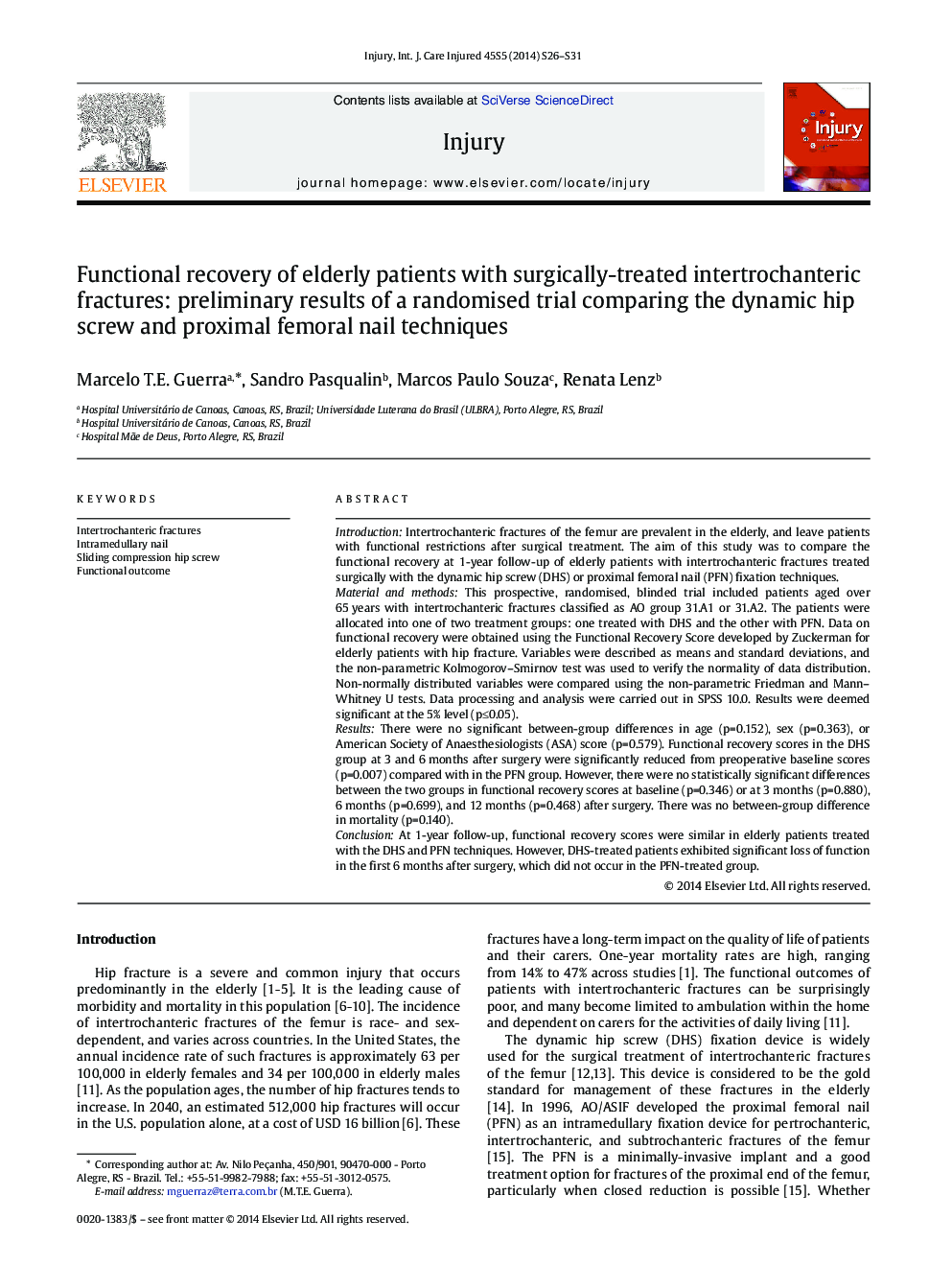| Article ID | Journal | Published Year | Pages | File Type |
|---|---|---|---|---|
| 3239873 | Injury | 2014 | 6 Pages |
IntroductionIntertrochanteric fractures of the femur are prevalent in the elderly, and leave patients with functional restrictions after surgical treatment. The aim of this study was to compare the functional recovery at 1-year follow-up of elderly patients with intertrochanteric fractures treated surgically with the dynamic hip screw (DHS) or proximal femoral nail (PFN) fixation techniques.Material and methodsThis prospective, randomised, blinded trial included patients aged over 65 years with intertrochanteric fractures classified as AO group 31.A1 or 31.A2. The patients were allocated into one of two treatment groups: one treated with DHS and the other with PFN. Data on functional recovery were obtained using the Functional Recovery Score developed by Zuckerman for elderly patients with hip fracture. Variables were described as means and standard deviations, and the non-parametric Kolmogorov–Smirnov test was used to verify the normality of data distribution. Non-normally distributed variables were compared using the non-parametric Friedman and Mann–Whitney U tests. Data processing and analysis were carried out in SPSS 10.0. Results were deemed significant at the 5% level (p≤0.05).ResultsThere were no significant between-group differences in age (p=0.152), sex (p=0.363), or American Society of Anaesthesiologists (ASA) score (p=0.579). Functional recovery scores in the DHS group at 3 and 6 months after surgery were significantly reduced from preoperative baseline scores (p=0.007) compared with in the PFN group. However, there were no statistically significant differences between the two groups in functional recovery scores at baseline (p=0.346) or at 3 months (p=0.880), 6 months (p=0.699), and 12 months (p=0.468) after surgery. There was no between-group difference in mortality (p=0.140).ConclusionAt 1-year follow-up, functional recovery scores were similar in elderly patients treated with the DHS and PFN techniques. However, DHS-treated patients exhibited significant loss of function in the first 6 months after surgery, which did not occur in the PFN-treated group.
